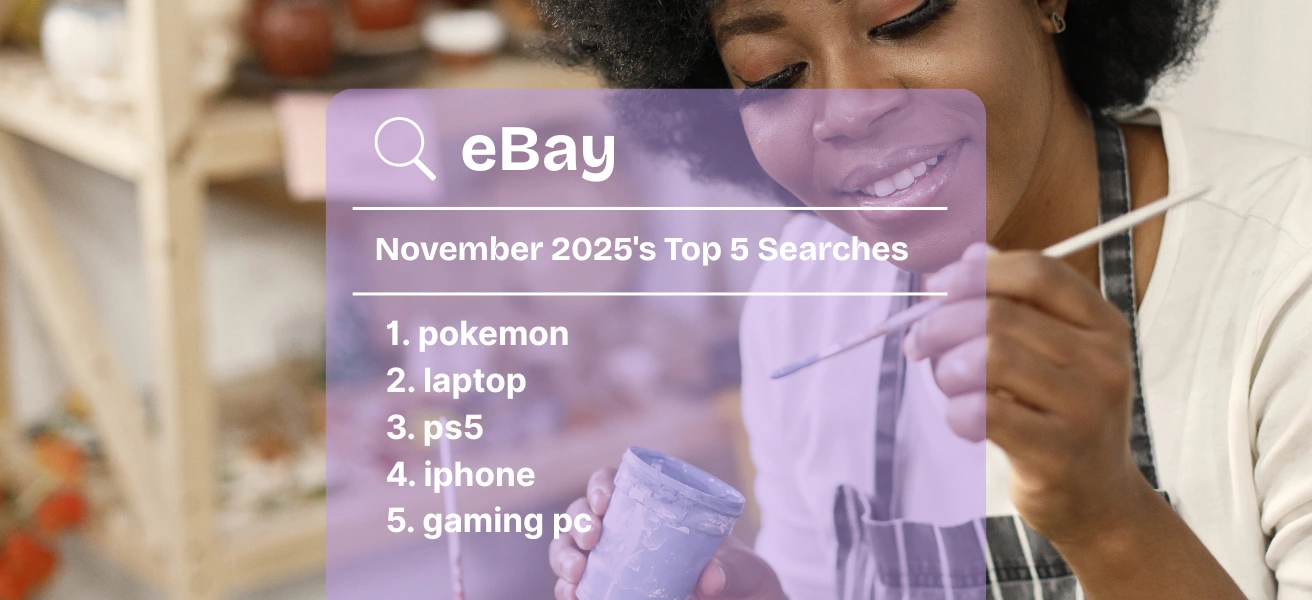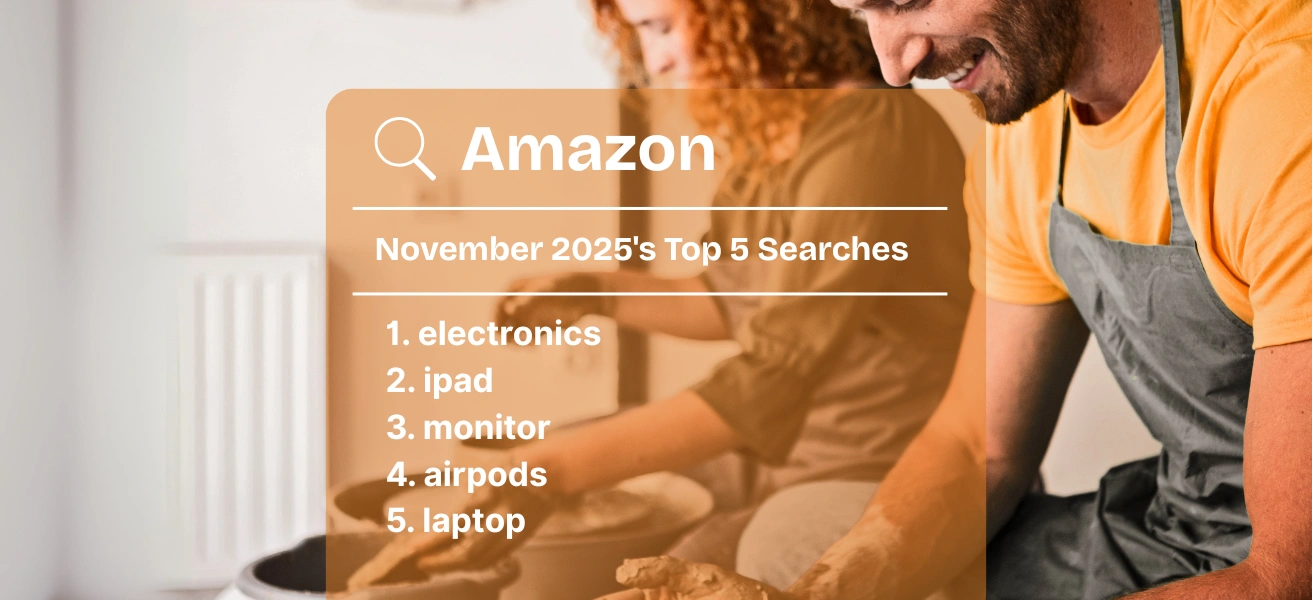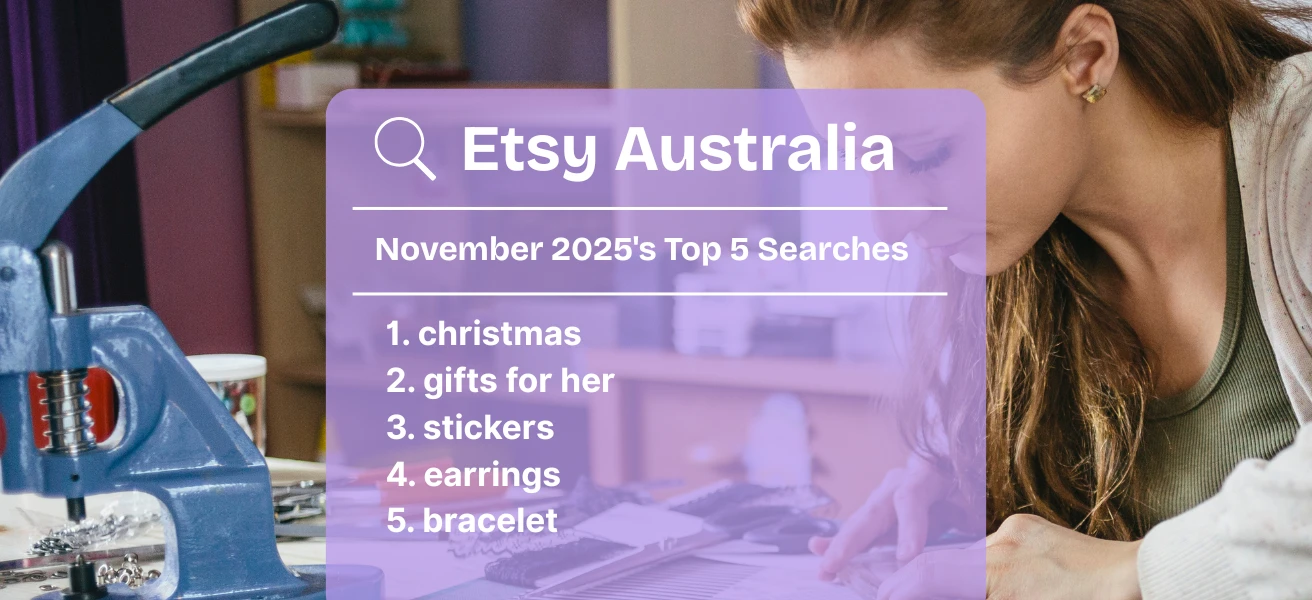Are you ready to start a business on Etsy? There are a lot of things to consider before taking the leap into the Etsy marketplace, but eRank is here to guide you along the way. Today, we are going to dive into the steps required to open an Etsy shop.
- Have Your First Listing Ready to Go
- Calculate the Price of Your Item (Including Shipping!)
- Create Your Etsy Account.
- Set Your Shop Preferences
- Name Your Shop
- Verify Your Identity & Set Up Your Finances
- Create Your First Product Listing
- Shipping Details
- Tell Your Story
- Learn How Etsy Search Works
- Start with eRank
1. Have Your First Listing Ready to Go
Chances are, if you’re here, you probably at least have an idea of what you want to sell. Whether you plan on selling physical items or digital products, be sure that you have at least one item ready to sell before you open your shop. Etsy requires sellers to create their first listing during the onboarding process.
- If you’re unsure, check Etsy’s Creativity Standards to learn what can and can’t be sold on the platform.
- Read through Etsy’s Seller Handbook and their abundance of help articles to understand all of their rules and regulations.
Aim to have 10 high-quality photographs and a video for your product.
- Photograph your product from every angle so that buyers can really see what they are getting.
- Take a video highlighting the features of your product. Make sure to portray your product’s size, its color(s), and materials used to create it.
- Read our post about product photography for Etsy to learn how to make your listings even better.
In addition, take some time to perform keyword research and choose your shop’s niche. Think about who your brand’s ideal target customer is and learn what keywords they use to shop online. Take some time to read The Ultimate Guide to Etsy Search and How Etsy Search Works to learn the ins and outs of crafting listings for success.
If you need help researching keywords or don’t know where to start, read eRank’s Step-by-Step Process to Find Keywords blog article or watch our webinar: How To Find Optimized Keywords For Your Etsy Listings With eRanks Keyword Tool.
2. Calculate the Price of Your Item (Including Shipping!)
One important aspect of selling on Etsy is your pricing strategy. As a seller, you need to cover the costs of materials, platform fees, shipping, and labor associated with your products. When pricing your items, consider performing market research to align your prices with similar products. Try eRank’s Profit Calculator to make calculating your profit margins quick and easy. Once you evaluate your profit margins, it’s easy to determine prices for your products that are fair for both you and your customers.
To learn more about the various Etsy fees and their impact on your shop, read:
- eRank’s blog post Etsy Seller Fees Explained
- Etsy’s Fees & Payments Policy article
When calculating prices for your products, think about how you will ship them. If you are mailing items out of your home, practice packing an item as if someone made a purchase from your shop. Measure the box or mailer that it will be packed in, and weigh the entire package. You will need this information when building your first listing on Etsy. Don’t forget to include the costs of your packing materials into your prices!
3. Create Your Etsy Account
After you have at least one product ready, photographed and researched, the next step is to open your shop. Fortunately for you, Etsy has made this process easy, with guided windows to walk you through the process.
Head over to Etsy.com/sell to begin the process. Click the “Get started” button in the center of the page. If you don’t already have an Etsy account, you will be able to register here. After registering, click the “Get started” button again.
4. Set Your Shop Preferences
You will need to select your shop language, country, and currency. Shop language is the default language for you shop, and cannot be changed at a later date. Choose the language that you will use when building listings in your shop, and one that you are comfortable using to communicate with buyers. You do have the option to add in manual translations, however Etsy translates most pages to the language a buyer is using.
It is imperative that you select the correct country for your shop. This should be where you reside and match any identification documents you provide to Etsy. (Please Note: If you are a Print on Demand seller, do NOT choose the country where your provider is located instead of your own.)
You will also need to choose your shop’s currency. Etsy charges a currency conversion fee on sales for shops that have a shop listing currency that differs from the currency of the Payment account.
- Learn more about Etsy’s Currency Conversion Fees
5. Name Your Shop
Choosing a name for your shop is one of the first steps to building a presence for yourself and your products. Don’t get too caught up on a name at this point. You can change your shop’s name as often as you like before going live. If you’re stuck and need some guidance, check out Etsy’s Top Tips for Choosing Your Etsy Shop Name article.
- Bonus Tip! Once you choose a name for your business, claim that name on social media platforms to create a seamless branding and marketing experience.
6. Verify Your Identity & Set Up Your Finances
A key part of onboarding is deciding how to receive payments and pay Etsy fees. You must give Etsy your personal, tax, and bank info in order to get paid after fulfilling your shop’s orders.
- Have scans of a photo ID such as a license or passport handy to streamline this process. These are used for the ‘Verify Your Identity’ portion of onboarding.
Etsy deducts fees from your earnings. Afterward, they deposit the remaining balance into your bank account. While Etsy doesn’t require sellers to have a business license, sellers are still required to follow any applicable laws in their country.
Etsy also requires that you have a credit card on file. You will need to pay a one-time shop setup fee during this onboarding process. Etsy will use your credit card to cover the cost. If you don’t have any earnings to deduct from, this is the payment method Etsy will use to collect their fees. Any outstanding fees are due on the first day of the following month.
If you have not previously set up Two-Factor Authentication for your account, Etsy requires you to do so before proceeding. After you complete this step, select “Open Your Shop” to officially begin selling on Etsy.
7. Create Your First Product Listing
Here is where you enter in all of the details for your first listing, most of which you have from following Step 1 of this article. Enter in details as accurately as possible, setting the correct Category, Attributes, Holiday, and Occasion, if applicable. Upload your photos and video for the listing, and craft your item’s description.
- For a more in-depth walk-through, read Etsy’s How to Create a Listing help article
- If you need help writing the title or description for your listing, try eRank’s AI-powered Listing Helper tool and read the accompanying blog article Listing Helper Saves You Time.
8. Shipping Details
Within each Etsy listing, there is an area for you to enter in the dimensions and weight of the item once packaged. Giving accurate shipping information helps Etsy calculate not only cost, but also estimated delivery dates. If you have previously selected “digital” as the item type, no shipping information is required, as buyers will have the ability to download purchases on their computer.
In the listing builder, choose ‘Create option’ for your first listing.
On Etsy there are two basic shipping price methods available; calculated and fixed.
- Calculated: Etsy uses the dimensions and weight of your packages to calculate shipping costs, so they need to be as accurate as possible.
- Fixed: Sellers charge a fixed rate for shipping.
Choose which price method you want to use. Then, proceed down the form, and enter in the origin point of your package, processing times, where you will ship to, which mail classes you will offer, and if there are any handling fees you would like to add. At the bottom of the form, you can save this profile to use for additional listings. Click “Apply” to save the shipping settings for this listing.
Please Note: For international sellers, you will need to enter a Tariff Number in the listing builder to have Etsy pre-fill customs forms for international packages.
Need more help with shipping for your Etsy shop? Read the following articles:
Are you going to offer returns or exchanges for items in your shop? Just below the shipping settings, you can choose the type of return or exchange policy you want to offer. Read Etsy’s help article How do I Set Return Policies on My Listings for more information and a walk-through.
Once you’ve added all relevant information, click “Publish” for the listing to go live on the Etsy marketplace!
9. Tell Your Story
Now it’s time to tell your shop’s story. Both buyers and Etsy tend to favor shops that are completed, such as the “About” section telling the story behind your creations. Add photos of your workshop, process, or you in the middle of making something! Add a photo of you to the “Shop Owner” section, and be sure to include any production partners or other employees who work with you.
Add policies for both returns and cancellations, as well as answers to common questions in the FAQ area. You can also add a banner image across the top of your storefront. Use it to showcase some of your most popular items! Also, remember to incorporate your business’s branding in the shop logo space.
- If you need some inspiration for your storefront, read Etsy’s Customizing the Look of Your Shop Home article and the eRank blog post Creating a Visually Appealing Etsy Shop.
10. Learn How Etsy Search Works
Now that your shop is open and completed, it’s time to learn how to drive sellers to it! SEO, or Search Engine Optimization, is the process of optimizing web content to be found in a search engine. Having content that is optimized for search is so important on the internet. Using a search engine, such as Google, is one of the most common ways people find what they are looking for.
This is also important for Etsy sellers because most shoppers find what they are looking for by entering a query into Etsy’s own search engine. Having listings optimized in a way that helps pair a shopper’s search query with your listings is how your products get in front of those shoppers.
To learn more about Etsy SEO, check out this Etsy SEO Basics eRank blog article and Etsy’s How Etsy Search Works post.
To learn what factors may affect your shop’s ranking, read this eRank blog article: Etsy SEO: These Factors Help Your Etsy Search Ranking.
As Etsy’s most popular SEO tool, eRank is committed to helping sellers learn, understand, and apply SEO techniques to their own shops. Let’s get started on eRank so that you can dive into the world of Etsy SEO and learn the methods of continuous improvement that can help your shop grow.
11. Start with eRank
Start for Free on eRank and connect your Etsy shop. You’ll learn more about your competitors, shop performance, top keywords, and more.
For a deep dive into how eRank can help you and your shop, read our Getting Started with eRank guide.
eRank is here to help you every step of the way. Be sure to check out the eRank Blog, YouTube Channel, and eRank Facebook Group for guidance, tips, and tricks. Best of luck on your Etsy journey!








